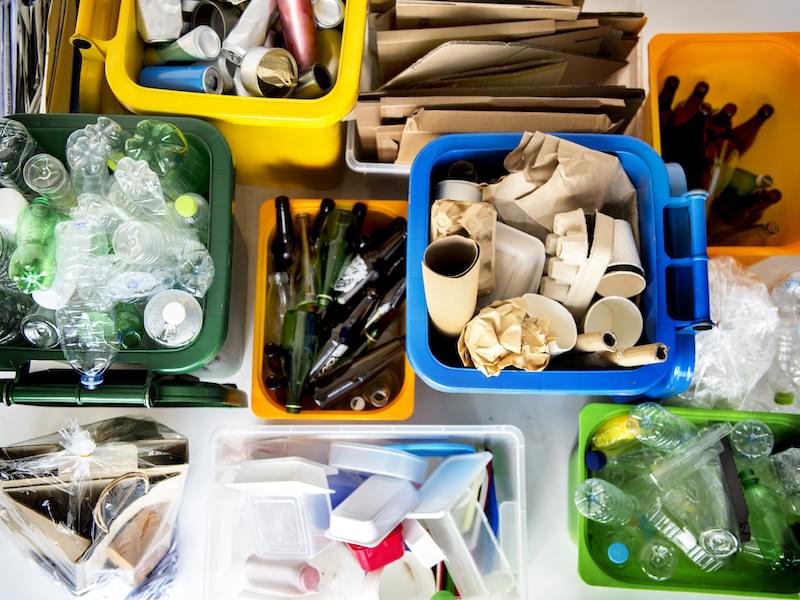To combat environmental problems related to packaging waste, a range of financial and fiscal measures are being investigated across the world. These measures are outlined in a new in-depth study from Smithers,
The Impact of EPR Legislation on the Packaging Industry to 2032.
According to the report, financial systems are in place in a number or countries to ensure the packaging supply chain contributes to the clean-up of waste and pollution arising from packaging usage. Future systems are also seeking to tax certain packaging materials, with incentives for using more “sustainable” packaging and heavy penalties for continued use of the most polluting materials. In extreme cases mandated package design requirements or even outright bans of certain packaging articles and additives are being implemented.
What is extended producer responsibility?
EU member states were mandated to set up EPR schemes for packaging in 2008 as part of the amended Waste Framework Directive 2008/98/EC. Of note, as of 2022, 3 other EPR schemes have been mandated within the EU covering waste electrical & electronic equipment (in 2012), batteries (in 2006) and vehicles (in 2000).
Extended producer responsibility schemes are a means of ensuring that the “polluter pays” principle is applied to waste management. As such, Extended Producer Responsibility (EPR) is a resource management tool whereby producers maintain the responsibility for their products and packaging to the end-of-life management of their used products. This can include collection, sorting and treatment for recycling and recovery. In practice, most EPR scheme impose financial fees on packaging producers to fund the waste management of their packaging waste.
The EU’s role in packaging legislation
The EU typically leads the world in environmental packaging legislation and legislation in other regions often follows the EU lead. Consequently, understanding EU legislative plans allows future global plans to be appreciated. plastic articles deemed the most polluting. The EU also introduced an EU-wide plastic tax in 2021 as part of its COVID-19 relief program.
Up to 2032, several additional schemes are expected. The EU will plan to introduce EPR Modulation in 2024. This will seek to adjust current EPR fees in member states to reward more “sustainable” package design usage, while penalizing more problematic packaging. Additional fees are expected by 2025 to cover littering fees for both land and marine clean up from packaging waste. Encouragement of recycled content in plastic packaging is expected in 2022 via the UK plastic tax, with mandated PCR usage into beverage bottles starting in 2025 in the EU as part of the SUPD. The SUPD will also mandate some package design changes, higher EPR fee & awareness raising measures for certain plastic packaging forms, and some bans of the most polluting plastic articles (such as wipes, disposable plates & cutlery etc..) over the 2022–2025 timeframe.
Benefits of EPR schemes
The basic feature of these schemes is that members of the packaging value chain, such as manufacturers, importers and retailers assume a significant degree of responsibility for the environmental impact of their products throughout their lifecycle. This extends to the initial package design, material selection and production processes, as well as ‘downstream’ impact relating to the products’ use and disposal. In so doing, producers accept their responsibility when designing their products to minimize their life-cycle environmental impact. Therefore, EPR extends the producers’ responsibility to the post-consumer stage of a product life cycle by assuming legal and economic liability for their products’ environmental impact, starting from the design phase.
Incentives for sustainable package design
Since EPR schemes commit producers financially to their end-of-life packaging, they also create incentives for packaging producers to design packaging that is easier and less costly to recover. As such, EPR scheme encourage greater use of light-weighted, recyclable, reusable, and returnable packaging designs.
Areas for improvement
A key challenge of EPR schemes is that they are all different, and especially between EU member states. This arises from the use of EU Directives to establish EPR schemes. EU Directives define what needs to be achieved by EU member states, but they do not define how this should be achieved. As such, while all EU member states are required to set up EPR schemes for packaging, nearly all such schemes are meaningfully different in terms of the fees, fee structure, how fees are collected and distributed, what waste packaging is collected, what technology is used for sort and recycling, interaction between industries and local authorities, etc. Different EPR systems in other regions outside the EU create further challenges.
